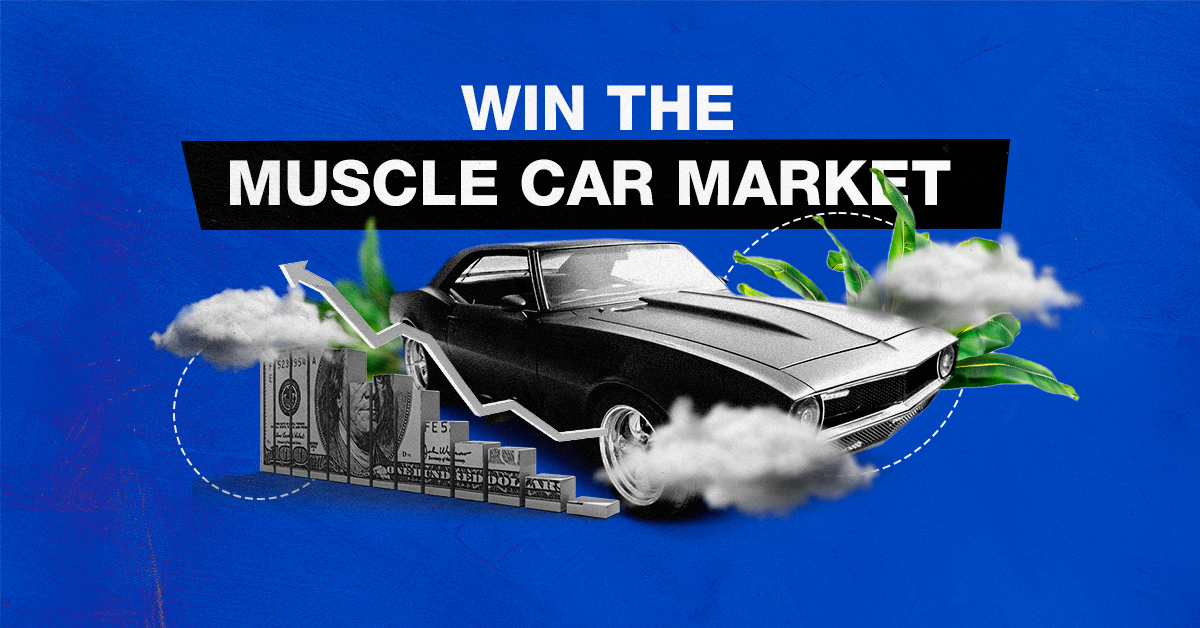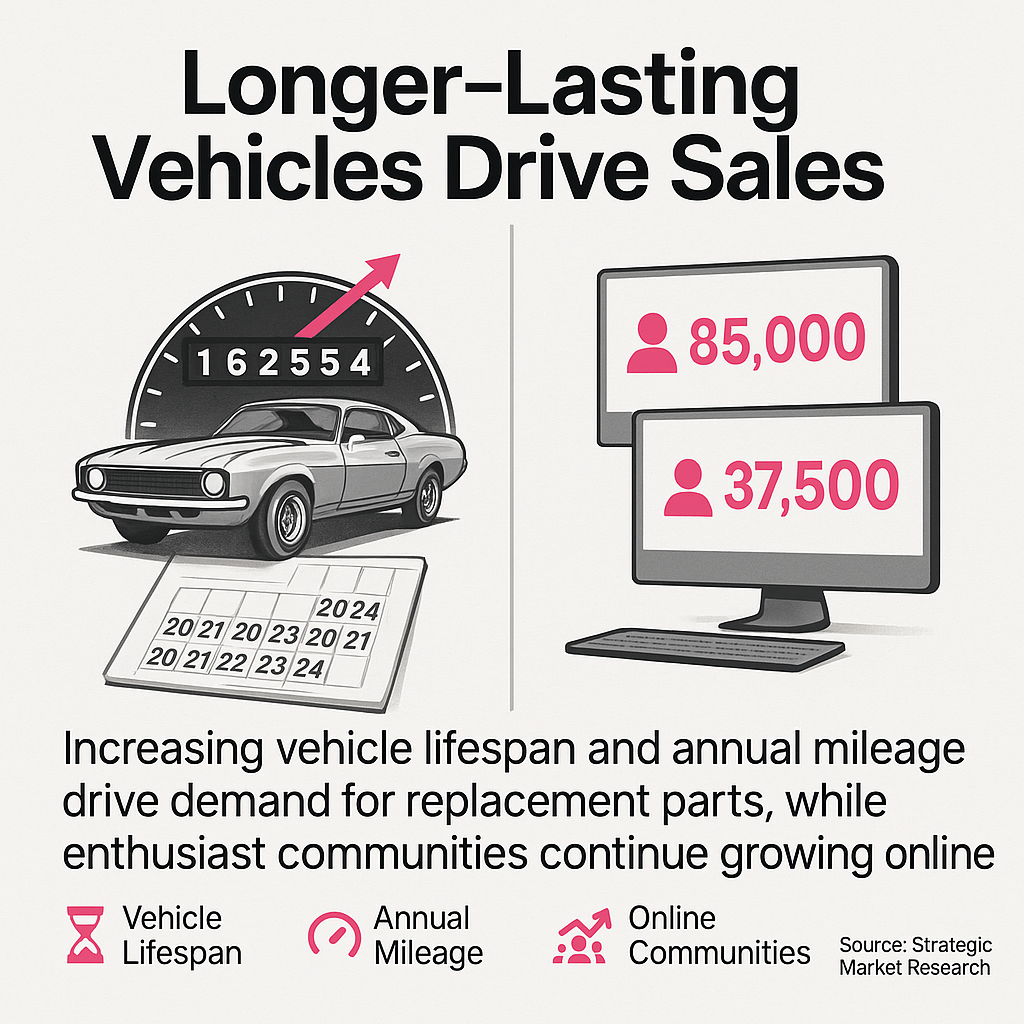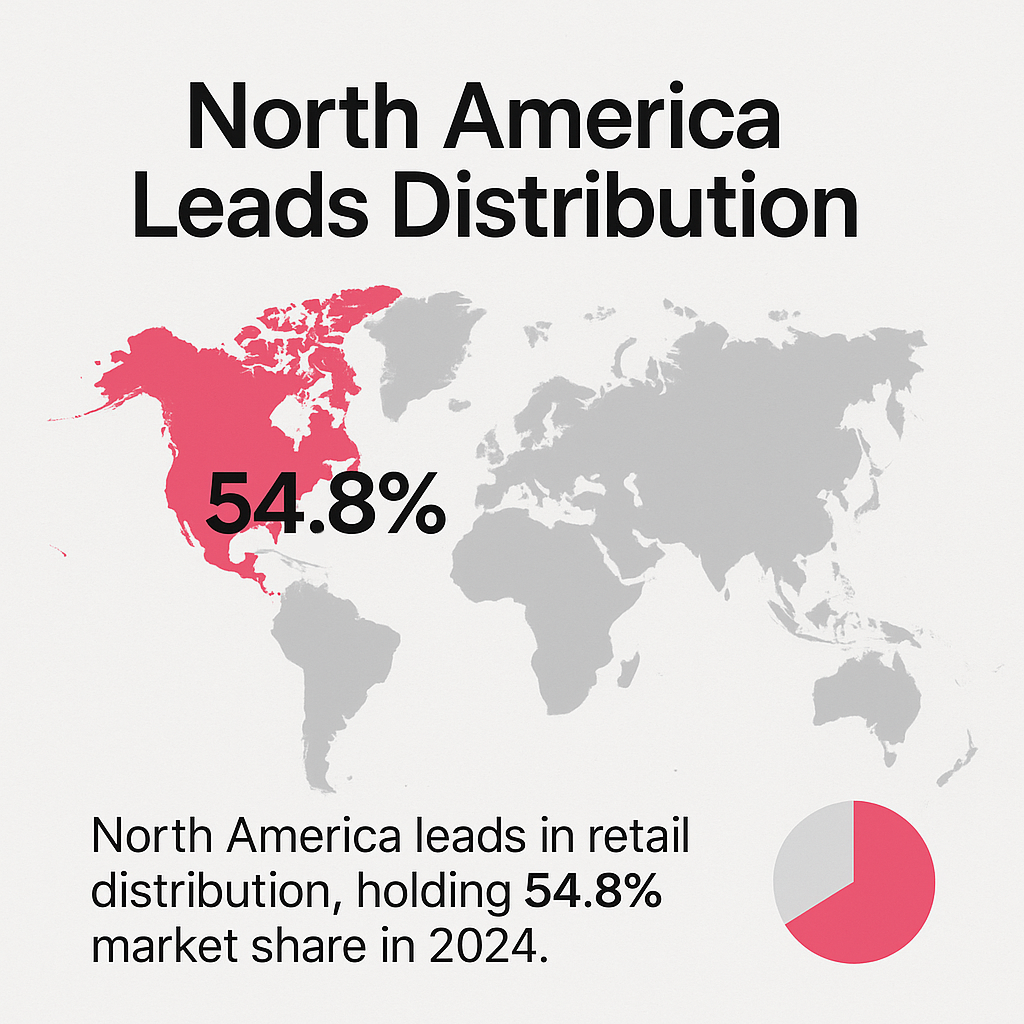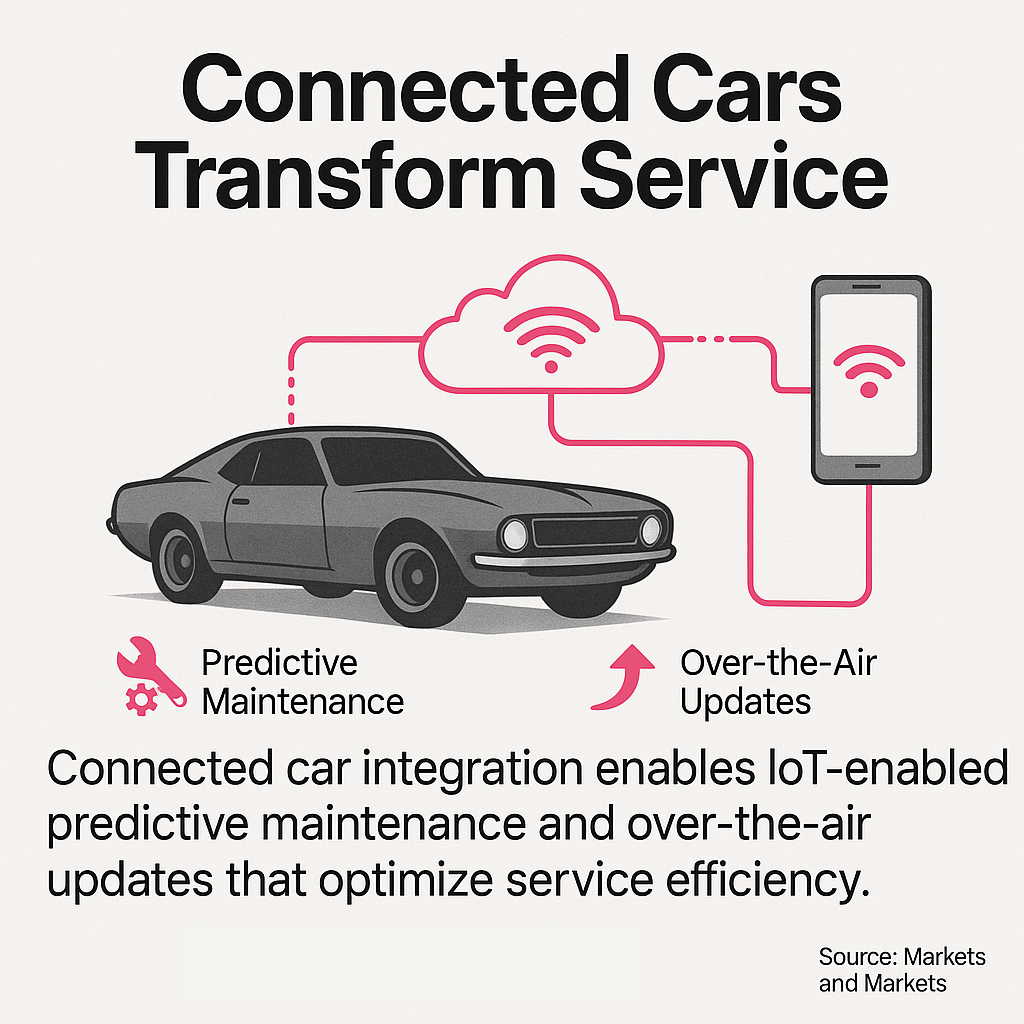
The muscle car parts market presents a goldmine of opportunity. Enthusiasts are passionate, loyal, and willing to spend on quality components. As the owner of an eCommerce PPC agency specializing in aftermarket auto parts retailers, I've watched many parts retailers struggle to capture market share online despite having great products. The disconnect often lies in digital strategy, not product quality.
The global automotive aftermarket was valued at $674.61 billion in 2024 and is projected to reach $804.87 billion by 2030, growing at a 2.9% CAGR over this period. (Source: Markets and Markets)
For muscle car parts retailers specifically, this represents a massive opportunity. But how do you cut through the noise and connect with serious buyers? This guide explores proven digital strategies to help you accelerate your muscle car parts business.
The muscle car parts segment continues to thrive despite economic fluctuations. Replacement parts dominate the aftermarket, with "others" (including performance components) holding approximately 47.33% market share in 2024. (Source: Grand View Research)
Several powerful trends are creating opportunities for savvy marketers in this space. Understanding these market dynamics helps you position your digital strategy for maximum impact.
The table below highlights the current state of key muscle car parts market segments:
|
Segment
|
Market Share
|
Growth Trend
|
Online Potential
|
|---|---|---|---|
|
Performance Parts
|
22.4%
|
Moderate Growth
|
High
|
|
Exterior Components
|
18.7%
|
Stable
|
Medium
|
|
Engine & Drivetrain
|
32.3%
|
Strong Growth
|
Very High
|
|
Interior Accessories
|
14.8%
|
Moderate Growth
|
Medium
|
|
Restoration Parts
|
11.8%
|
Strong Growth
|
High
|
This market segmentation guides where to focus your digital marketing efforts for the greatest return. Engine and drivetrain parts show particularly strong growth and online potential.

Understanding what's fueling market growth helps shape more effective marketing strategies. Increasing vehicle lifespan and annual mileage drive demand for replacement parts, while enthusiast communities continue growing online. (Source: Strategic Market Research)
E-commerce expansion is reshaping parts distribution, enabling direct OEM-customer engagement and broader product access. This shift creates new opportunities for retailers who master digital channels.

Regional distribution also plays a critical role in strategy development. North America leads in retail distribution, holding 54.8% market share in 2024. This regional dominance makes it particularly lucrative for parts retailers targeting American muscle car enthusiasts.
Successful digital marketing starts with knowing your customer. Muscle car enthusiasts have unique characteristics that should shape your approach:
This deep knowledge influences marketing tactics. Generic approaches fail with this audience. They expect technical accuracy, detailed specifications, and proof of quality.
The typical customer journey for muscle car parts involves multiple touchpoints:
|
Journey Stage
|
Customer Behavior
|
Digital Touchpoint Opportunity
|
|---|---|---|
|
Awareness
|
Recognizes need for part or upgrade
|
Search engines, social media, forums
|
|
Research
|
Compares options, reads reviews, seeks recommendations
|
Product content, comparison tools, reviews
|
|
Consideration
|
Evaluates specific options based on fit, quality, price
|
Detailed product pages, videos, spec sheets
|
|
Purchase
|
Makes final decision and completes transaction
|
E-commerce platform, checkout experience
|
|
Post-Purchase
|
Installation, evaluation, sharing experience
|
Email follow-up, social sharing, review requests
|
Understanding this journey helps you create targeted content and ads for each stage. Now, let's look at specific digital strategies to reach these customers.
Let's explore the most effective digital marketing channels for reaching muscle car enthusiasts and converting them into customers.
SEO forms the foundation of any effective digital strategy. For muscle car parts, these elements deserve special attention:
Product-specific keyword targeting works best for parts. Unlike general terms like "car parts," specific searches like "1969 Camaro SS exhaust manifold" drive higher conversion rates. These long-tail keywords may have lower search volume but deliver qualified traffic.
Technical specifications in structured data format help search engines understand your products. This improves visibility in both organic results and Google Shopping.
Fitment information clearly presented helps both users and search engines understand compatibility. This reduces returns and improves customer satisfaction.
The most successful parts websites create comprehensive content around specific vehicles, parts compatibility, and installation guides. This not only attracts search traffic but also builds authority in the niche.
Pay-per-click advertising delivers immediate visibility for your parts catalog. When implementing PPC for muscle car parts, consider these approaches:
|
PPC Element
|
Best Practice
|
Example
|
|---|---|---|
|
Keyword Strategy
|
Target specific part numbers and vehicle applications
|
"1969 Camaro exhaust manifold" vs. generic "car parts"
|
|
Ad Copy
|
Emphasize authenticity, quality, and fitment guarantees
|
"100% Authentic Parts for Your 1970 Chevelle - Perfect Fit Guaranteed"
|
|
Landing Pages
|
Direct links to specific product categories or parts
|
Dedicated page for Mustang engine components rather than homepage
|
|
Ad Extensions
|
Utilize callouts for key selling points
|
Free shipping, fitment guarantee, expert support
|
Google Shopping ads work particularly well for parts, as they showcase your product image, price, and basic details right in the search results. This format aligns perfectly with how muscle car enthusiasts shop for specific components.
Social platforms offer excellent opportunities to connect with muscle car enthusiasts. Each platform serves a different purpose in your strategy:
Facebook excels at community building and targeted advertising. Creating or participating in enthusiast groups builds brand awareness and trust. Targeted ads based on interests like "muscle cars" or "classic car restoration" reach qualified prospects.
Instagram showcases products, restoration projects, and customer builds through visual content. Before-and-after photos of restorations using your parts generate strong engagement.
YouTube hosts installation guides, product reviews, and comparison videos. This platform serves both as content marketing and a powerful advertising channel.
Visual content performs exceptionally well in this market. Showing parts installed on vehicles, before-and-after restoration photos, and detailed product shots drives engagement and sales.
Email marketing remains one of the highest-ROI channels for muscle car parts retailers. Effective email strategies include:
New product announcements for specific vehicle models keep your inventory top-of-mind. Segmenting your email list by vehicle make, model, and year allows for highly targeted communications that drive sales.
Seasonal maintenance reminders with relevant parts suggestions provide value while promoting products. Educational content about restoration techniques builds trust and positions you as an authority.
Limited-time offers on popular components create urgency, while back-in-stock notifications for rare items drive immediate action. The key is relevance – sending Chevy parts emails to Ford enthusiasts wastes everyone's time.
Your website serves as both your storefront and sales team. Optimizing the e-commerce experience specifically for muscle car parts requires attention to these areas:
The way you present parts online directly impacts conversion rates:
|
Element
|
Best Practice
|
Impact on Conversion
|
|---|---|---|
|
Product Titles
|
Include year, make, model, part type, and key attributes
|
High
|
|
Images
|
Multiple angles, installed views, zoom capability
|
Very High
|
|
Fitment Data
|
Comprehensive compatibility information with year/make/model finder
|
Critical
|
|
Technical Specs
|
Detailed specifications in structured, scannable format
|
High
|
|
Pricing
|
Clear pricing with any quantity discounts or core charges noted
|
The year/make/model selector is particularly crucial for parts websites. Customers expect to filter products by their specific vehicle to ensure compatibility.
Mobile shopping continues to grow in importance, even for complex purchases like car parts. Your mobile experience should include:
Fast loading times (under 3 seconds) prevent abandonment. Simplified navigation with prominent search and vehicle selectors helps users find parts quickly. Readable product specifications without horizontal scrolling improve the browsing experience.
Remember that many enthusiasts research parts while in their garage or at car shows, making mobile accessibility essential.

Effective inventory management directly impacts customer satisfaction. Connected car integration enables IoT-enabled predictive maintenance and over-the-air updates that optimize service efficiency. (Source: Markets and Markets)
For muscle car parts retailers, inventory management becomes particularly important due to limited availability of some reproduction parts and seasonal demand fluctuations.
Implementing a robust inventory management system helps ensure you can fulfill orders promptly while minimizing overstock situations.
Beyond the basics, several advanced tactics can give your muscle car parts business a competitive advantage online.
Muscle car parts often involve high consideration and research before purchase. Retargeting allows you to stay visible during this extended decision process.
Show specific parts a visitor viewed in your retargeting ads for maximum relevance. Create segment-specific messaging (e.g., restoration projects vs. performance upgrades) that speaks to different buyer motivations.
What's the difference between remarketing and retargeting for auto parts sellers? While often used interchangeably, understanding the nuances can help you implement more effective campaigns.
Video content performs exceptionally well for muscle car parts because it can demonstrate installation, showcase fit and finish, and highlight performance benefits.
Installation tutorials for complex parts reduce support calls and build confidence. Before-and-after demonstrations visually prove your product's value. Comparison videos between OEM and aftermarket options help customers make informed decisions.
Hosting these videos on YouTube creates both a content resource and a marketing channel through YouTube's advertising platform.
Successful muscle car parts retailers make decisions based on data rather than assumptions. Key areas for data analysis include:
Data Category
|
Data Category
|
Metrics to Track
|
Business Impact
|
|---|---|---|
|
Customer Behavior
|
Browse patterns, cart abandonment, vehicle searches
|
Inventory planning, site optimization
|
|
Marketing Performance
|
Channel ROI, cost per acquisition, lifetime value
|
Budget allocation, campaign refinement
|
|
Product Performance
|
View-to-purchase ratio, margin contribution, return rate
|
Product selection, pricing strategy
|
|
Competitive Analysis
|
Price positioning, assortment gaps, promotion frequency
|
Strategic planning, competitive advantage
|
Using tools like Google Analytics 4 and e-commerce platform analytics provides the insights needed to continuously improve your digital strategy.
Innovative business models are emerging in the automotive parts space. On-demand models include subscription services and car-sharing platforms that create new revenue streams for parts providers.
Parts subscription boxes for collectors and restorers provide regular income while delighting customers. Membership programs with exclusive pricing and early access build loyalty. Maintenance schedule-based parts delivery services add convenience while increasing your share of wallet.
Building these innovative business models into your e-commerce strategy can help differentiate your business from competitors who focus solely on traditional transaction-based sales.
Effective digital marketing requires measuring the right metrics. For muscle car parts retailers, these KPIs deserve close attention:
Track vehicle-specific search traffic and category page visits to understand customer interests. Monitor add-to-cart rate, checkout completion, and fitment search conversion to identify user experience issues. Analyze repeat purchase rate, average order value, and customer lifetime value to gauge loyalty.
These metrics create a dashboard that helps you continuously refine your approach based on actual results rather than assumptions.

The muscle car parts market presents substantial opportunities for digital marketers who understand both the technical aspects of e-commerce and the unique characteristics of automotive enthusiasts. By implementing the strategies outlined in this guide, you'll be well-positioned to capture market share in this growing segment.
Success in this space requires authenticity, technical accuracy, and outstanding customer service. Digital tools and tactics are powerful, but they must be backed by genuine expertise and quality products.
Ready to accelerate your muscle car parts business? Start by assessing your current digital presence against the benchmarks discussed here. Identify the highest-priority improvements based on your specific situation, then implement a methodical plan to enhance your digital strategy.
Our customers value boutique agency approach with access to a seasoned team, profit-based goals, and clear communication.



